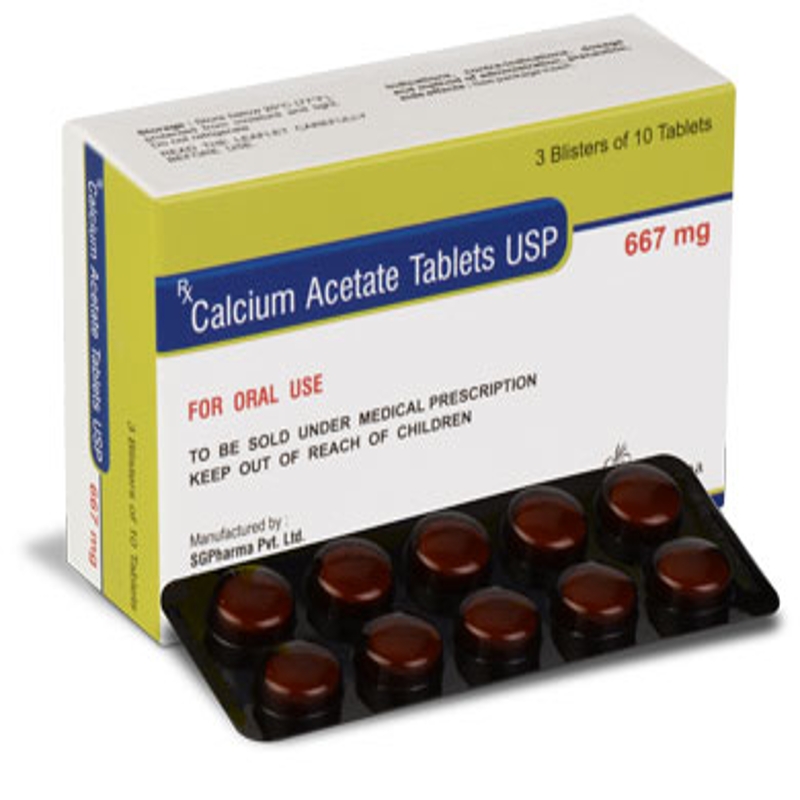-
Categories
-
Pharmaceutical Intermediates
-
Active Pharmaceutical Ingredients
-
Food Additives
- Industrial Coatings
- Agrochemicals
- Dyes and Pigments
- Surfactant
- Flavors and Fragrances
- Chemical Reagents
- Catalyst and Auxiliary
- Natural Products
- Inorganic Chemistry
-
Organic Chemistry
-
Biochemical Engineering
- Analytical Chemistry
-
Cosmetic Ingredient
- Water Treatment Chemical
-
Pharmaceutical Intermediates
Promotion
ECHEMI Mall
Wholesale
Weekly Price
Exhibition
News
-
Trade Service
Multiple myeloma (MM) is a malignant disease in which clonal plasma cells proliferate abnormally, more common in the elderly
.
In recent years, the MM field has made rapid progress, and a large number of academic achievements are produced
every month.
Keeping up with academic progress is a must for clinicians, but hematologists are busy with their daily routines and it can be difficult to spend a lot of time reading
through all the progresses.
The series of "Feifan Blood Cloud Classroom - Myeloma Literature Intensive Reading Workshop" aims to understand the cutting-edge new knowledge of MM precision diagnosis and treatment through the intensive reading of excellent literature in the field of MM, explore the optimal diagnosis and treatment strategies of MM, and hope to provide valuable reference for MM clinical practice and improve the survival and prognosis
of MM patients.
This issue brings you a selection of November articles that collate the prognostic impact of 1q21+ on newly diagnosed multiple myeloma (NDMM) patients, and highlight content of genome-wide analysis in relapsed/refractory multiple myeloma (RRMM) applications!
Chromosome 1q21+ is a poor prognostic factor in NDMM patients treated with bortezomib
https://pubmed.
ncbi.
nlm.
nih.
gov/36185185/ (IF=5.
738)
Research background
MM is a neoplastic plasma cell disease whose disease progression may be implicated in
genomic instability, epigenetic dysregulation, and interactions in the bone marrow niche during clonal evolution.
Previous studies have confirmed that clinical heterogeneity in MM depends largely on cytogenetic abnormalities
.1q21 gain is one of the most common cytogenetic abnormalities in MM, and chromosome 1q21 abnormalities involving the 1q12-23 region are often complex and tend to become unstable
during tumor progression.
At present, the prognostic value of chromosome 1q21 abnormalities is still controversial
in the study of cytogenetic abnormalities.This study aimed to explore the prognostic significance of 1q21+ in NDMM patients treated with bortezomib regimen to better understand the genetic basis of MM and guide treatment strategies
.
Study design
This study is a single-center retrospective cohort study of patients with NDMM who received continuous bortezomib-based regimen-based treatment at Xijing Hospital of Air Force Military Medical University (Fourth Military Medical University) from 2014 to 2021, all patients were at least 18 years of age, and were diagnosed
according to International Myeloma Working Group (IMWG) criteria.Bortezomib-based regimens are mainly divided into two categories, the first group of regimens contains only one new drug, bortezomib, dexamethasone, such as VD (bortezomib, dexamethasone) and VCD (bortezomib, cyclophosphamide, dexamethasone); The second group of regimens consists of two new drugs, bortezomib, and immunomodulatory drugs (IMiDs), such as VTD (bortezomib, thalidomide, dexamethasone) and VRD (bortezomib, lenalidomide, dexamethasone).
Study results
From March 2014 to January 2021, a total of 194 patients with MM were enrolled, of which 45.
9% (n=89) were 1q21+
.
Compared with patients who did not detect 1q21+, patients with 1q21+ showed the following clinical features: (1) more advanced ISS (p=0.
003) and R-ISS (p<0.
001) stages; (2) The serum albumin level was low (p=0.
004); (3) The level of lactate dehydrogenase was high (p=0.
023).Univariate analysis showed that risk factors for survival outcomes in patients with NDMM included: 1q21+, β2-microglobulin, t(4; 14) and peripheral plasma cells
.Studies observed that 1q21+ was associated with del(13q), t(4; 14) There is a significant correlation with other cytogenetic abnormalities or complex karyotypes (Table 1).
Table 1 Correlation between 1q21+ and cytogenetic abnormalities
Survival analysis showed that PFS and OS were significantly shorter in patients with 1q21+ compared with those without 1q21+ detected (median PFS: 21 versus 35 months, p<0.
001; median OS: 43 versus NR, p<0.
001) (Figure 1).
More than three copies of 1q resulted in a poor prognosis, but there was no significant difference
in survival between patients with Gain1q and Amp1q.
Figure 1 Effect of 1q21+ on PFS and OS
The overall response rate (ORR) of 1q21+ patients (n=89) was 74.
2%, of which the complete response (CR) rate was 30.
3
%.
In patients with no 1q21+ (n=105), the ORR was 87.
6% and the CR rate was 29.
5% (Table 2).
Table 2 Patient response rate
Discuss:
This is a real-world retrospective study that further demonstrates the correlation of 1q21+ with PFS and OS in MM patients, and when the influence of other cytogenetic abnormalities is excluded, 1q21+ may significantly lead to adverse outcomes
.Recent studies have shown that the coexistence of multiple cytogenetic abnormalities is an important prognostic indicator
.
Analysis of this study showed that the coexistence of 1q21 with other cytogenetic abnormalities led to a worse
prognosis.
In addition, del(13q) is closely related to 1q21+, and the coexistence of del(13q) and 1q21+ may lead to a significant reduction
in PFS and OS.This study had limitations of retrospective criteria, including insufficient case numbers and selection bias, and the results need to be validated
by further follow-up and prospective studies.Studies demonstrate the importance of
1q21+ in MM patients treated with the bortezomib regimen.
FISH should be included in routine testing, and replacement therapy should be considered for patients with 1q21+, whose prognosis may be improved with newer drugs
.
Genome-wide analysis identifies novel driver genes and double-whammy high-risk events in RRMM
https://pubmed.
ncbi.
nlm.
nih.
gov/36223594/ (IF=25.
476)
Research highlights
Using the largest whole genome sequencing (WGS) dataset, increased biallele and double-whammy events in RRMM were discovered, as well as new rare driver genes
.EZH2, PIGO, and DUOX2 are new driver candidates
in RRMM that are almost mutually exclusive.
Research background
Large-scale analysis of genomic data from NDMM patients has been performed in the past, however, genomic data from RRMM patients has not been analyzed
on a large scale.Tumor genomic variants associated with drug-specific resistance, as well as immune cell abnormalities
associated with immunotherapy resistance, have previously been described.
However, how drug-specific genomic evolution enhances "high-risk" genetic signatures
in successive therapeutic exposures has not been systematically explored.
Research methods
The study hypothesized that somatic variants recorded the therapeutic exposure and clonal structures
of patients from NDMM to RRMM stage.WGS data
were obtained from 418 tumor samples (386 patients) from 6 RRMM clinical trials.
Patients with RRMM were classified according to their resistance status of lenalidomide (LENR) or pomalidomide (POMR): LENR cohort (n=269, 70%), POMR cohort (n=55, 14%); Patients have been previously exposed to proteasome inhibitors and/or corticosteroids
.Based on a population-based case-control study, WGS data from patients with RRMM were compared with WGS data from 198 patients with unrelated NDMM, and an in-depth analysis
of how the genome of MM patients after exposure to lenalidomide and pomalidomide-based therapy regimens was analyzed.
Study results
44 genes were identified in RRMM tumors, including 34 NDMM genome-wide specific driver genes and 10 newly discovered candidate driver
genes.
Clonality analysis based on the distribution of driver gene cancer cell fraction (CCF) showed that the new driver gene was generally subclonal.
Driver genes (DUOX2, EZH2, TP53) increase significantly during the RRMM stage (Figure 2).
Figure 2 Clonal analysis based on CCF distribution
A total of 15 driver genes were observed to have biallele inactivation, of which the bialleles CDKN2A and CREBBP were unique
to RRMM.
TP53 was the most common biallele event in RRMM (9.
3%), with a significant increase (1.
8-fold)
compared with NDMM.RRMM noncoding region mutation hot spot analysis identified 10 genome-wide signals (FDR<0.
05), such as TP53BP1, BLM, etc
.IgH translocation events were found in 42% of RRMM tumors, similar to NDMM datasets (44%) and previously reported (41%), with the most common IgH translocation event being t(11; 14)、t(4; 14) and t(8; 14), while t(6; 14) and t(14; 16) Less common
.The study found that copy number distortion (CNA) 1qGain, 6qLOH and 17pLOH increased significantly (FDR<0.
01).
and found significant increases
from NDMM to LENER to POMR, 1qGain and 17pLOH.Somatic cell interaction analysis found that the most significant interactions were the coexistence of TP53 and LOH17p, and the mutual exclusion of HRD and WGD.
In addition, a significant increase in double-hit events was found in patients with RRMM, with 1qGain-17pLOH being the most common double-whammy event in RRMM (11%)
.The analysis of mutation characteristics showed that the incidence and activity of SBS2, SBS13, SBS12 and SBS-MM1 increased in RRMM, and the mismatch repair defect (DMR)-related gene SBS12 showed strong activity growth
at the subclonal level.
In addition, a significant increase
in mutational burden was observed in tumors with increased DMR.Further analysis focused on the enhancement of genomic aberrations in IMiDs-based treatments at different stages of drug resistance
.
The analysis results showed that the incidence of TP53, DUOX2, 1qGain, and 17pLOH increased from NDMM to LENER to POMR, while MAML3 increase and IGL and MYC translocations distinguished POMR from the LENR subgroup
.
discuss
This study is the largest RRMM WGS data analysis to date (616 total patients) and provides the most comprehensive RRMM genome-wide analysis to date, identifying new RRMM driver genes
through coding and noncoding region variants of the genome.Interestingly, the 10 coding region driver genes in RRMM showed significant clonal amplification or increase
compared to NDMM.
This observation suggests that these driver genes are associated with therapeutic resistance, are present before treatment exposure, and provide clonal advantages after treatment exposure; or emerging and increasing
when resistance develops at the RRMM stage.
Further analysis is needed to understand the role of
these new driver genes in treating drug resistance.When comparing CNA increase patterns, 1qGain and 17pLOH were not only enriched in RRMM whole gene datasets, but also increased as a double-whammy, and there was also a significant increase in the trend
from LENER to POMR.The increase in the RRMM subclonal feature SBS12 may be due to DMR
.
DMR tumors accumulate high levels of mutations, a feature that may be associated with
therapeutic resistance to myeloma.The driver genes associated with RRMM are those that confer a selective advantage for cloning under treatment
.
Their role in therapeutic resistance should be further evaluated in longitudinal patient samples to clarify associations with clinical resistance evolution and to refine the molecular subsets
of targeted therapies for RRMM.
Real-world retrospective results confirm the adverse effect
of 1q21+ on the prognosis of MM patients treated with bortezomib regimen.
It suggests that FISH should be included in routine testing in clinical management and that alternative therapies should be considered for patients with 1q21+, especially if newer drugs may improve their prognosis
.
The largest RRMM WGS data analysis to date, providing a comprehensive RRMM genome-wide analysis, the results of which contribute to a deeper understanding of the role of driver genes in the treatment of drug resistance, thereby further improving the targeted therapy
of RRMM.
MAT-CN-2230031
Edited by Arya Reviewed: Moon Typeset: Moly Executed: WentingDisclaimer: This platform is designed to deliver more medical information
to healthcare professionals.
The content published on this platform cannot replace professional medical guidance in any way, nor should it be regarded as diagnosis and treatment advice
.
If such information is used for purposes other than understanding medical information, this platform does not assume relevant responsibilities
.
The content published by this platform does not mean that it agrees with its description and views
.
If copyright issues are involved, please contact us and we will deal with
it as soon as possible.
Poke "Read Original" to see more







